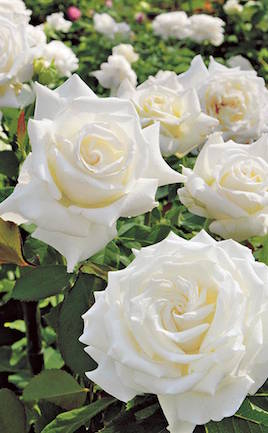- Flowers
Flower Bulbs Allium Bulbs Anemones Begonia Tubers Crocus Bulbs Daffodil Bulbs Dahlia Tubers Hyacinth Bulbs Lily Bulbs Tulip Bulbs Woodland Flower Bulbs Other Flower BulbsFlower Plants Annual Bedding Plants Children's Flower Plants Clematis Climbing Plants Cottage Garden Plants Exotic Plants Flowers For Cutting Plants Foliage Plants Greenhouse & Indoor Plants Ground Cover Plants Hanging Basket Plants Lavender PlantsHardy Geraniums Herbaceous Border Plants Heuchera Pansies and Violas Patio Plants Water Plants Window Box Plants Winter Bedding Plants Hydrangea Large impact plants Recommended By Our Experts
- Fruit & Vegetables
- Trees, Shrubs & Ornamentals
- House Plants
- Tool Shed
Garden Tools & Equipment Barrows and Trolleys Garden Solutions Harvesting Plant Supports Seed Sowing Tree Stakes Water Butts Weed Control Hand Tools Secateurs, Snips and Pruners WorkshopGarden Irrigation & Watering Irrigation Kits Water Butts Hoses & Sprays Miscellaneous Fertilisers Plant Pots Hanging Baskets Plant Protection Garden Compost All Compost
- Outdoor Living
Garden Living Barbecues & Firepits Garden Storage Solar Lights & Lighting Fixtures & Ornaments Awnings Sail Shades Garden Clocks Landscaping Lawn Edging PavingPatio Heaters Gas Patio Heaters Electric Patio Heaters Fire Pits, Chimeneas, Fire Baskets Wallmounted/Ceiling Patio Heaters Freestanding/Table Top Patio Heaters Water Features Solar Powered Water Features Mains Powered Water Features Indoor Water Features Outdoor Water FeaturesGarden Furniture Rattan Furniture Parasols Garden Benches Dining Sets Loungers Wooden Furniture Party Tents & Gazebos
- Wild Birds
- Gardening Info
- Special Offers
Join Our Gardening ClubVan Meuwen Gardening Club
Become a Member
Join our Gardening Club to unlock exciting perks and discounts!
JUST £10 for one year's membership
10% OFF EVERY order placed online £20 worth of Van Meuwen Vouchers Exclusive members only deals Join NowHow to plant and grow roses
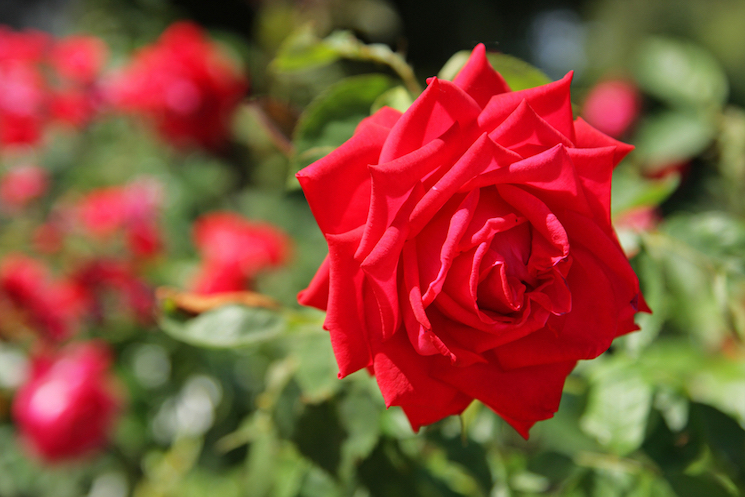
The red rose is often used to symbolise love or power
Image: ShutterstockRoses can transform a garden, filling it with beautiful colour and delicious perfume. And growing roses can be easy and rewarding, providing you follow some good advice.
That’s where we can help. Whether you’re looking for a patio rose, a climbing rose or rose bushes, this is how to plant and grow your favourite rose. For further information on pruning roses, make sure you check out our pruning guide.Types of roses
With so many varieties of rose available, it’s difficult to know which to pick. Let’s start with a rough guide to the different types of rose:
Hybrid tea rose
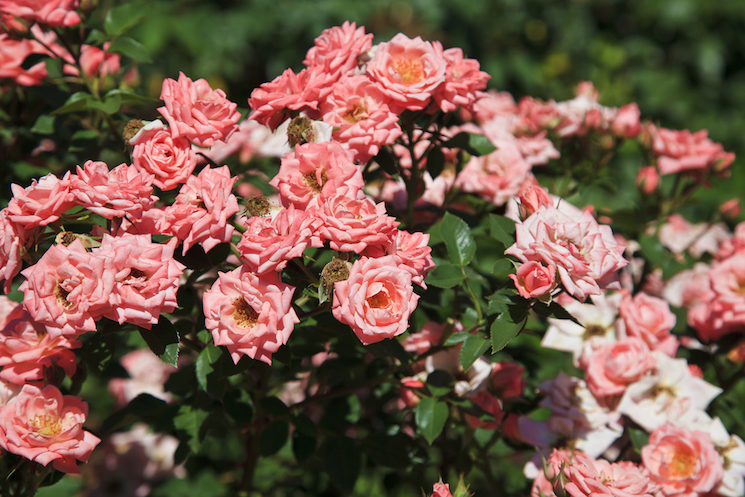
Tea roses often smell divine
Image: Jill LangIf you’ve ever given or received a dozen red roses, you can be sure that they were tea roses. Growing one bloom per stem, tea roses are the perfect choice for florists. Their flowers are large and many-petalled, come in a range of colours, and are often beautifully fragranced. They flower throughout the summer and autumn and do best in containers and borders.
Floribunda rose
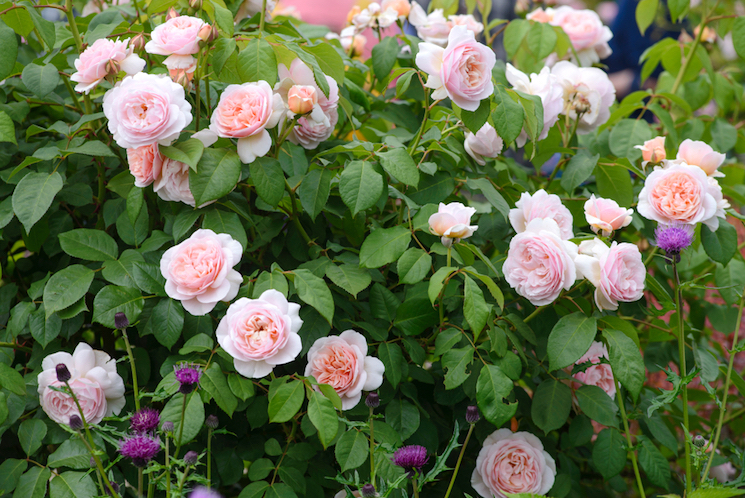
Floribunda means ?flowering freely?
Image: marinatakanoFloribunda roses are smaller and flatter than tea roses. They bloom in clusters at the tips of stems; and each flower within the cluster opens at a different time, giving a long-lasting display throughout the summer and autumn. That’s why they’re called floribunda, which means ‘flowering freely’. Many varieties of floribunda are fragrant and they look great in containers and borders.
Shrub rose
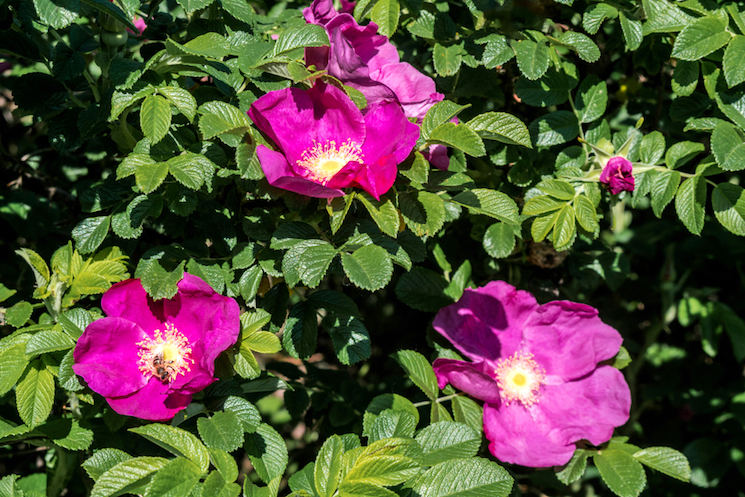
Shrub roses are often very fragrant
Image: Nick PeckerShrub roses are normally larger than hybrid teas and floribundas. The flowers can be single (like the ones pictured above) or double, and they’re usually borne in clusters. Modern varieties of shrub roses are repeat flowering, whereas old varieties will produce one heavy flush of flowers in early summer. They’re usually very fragrant and suit borders and hedging.
Climbing rose
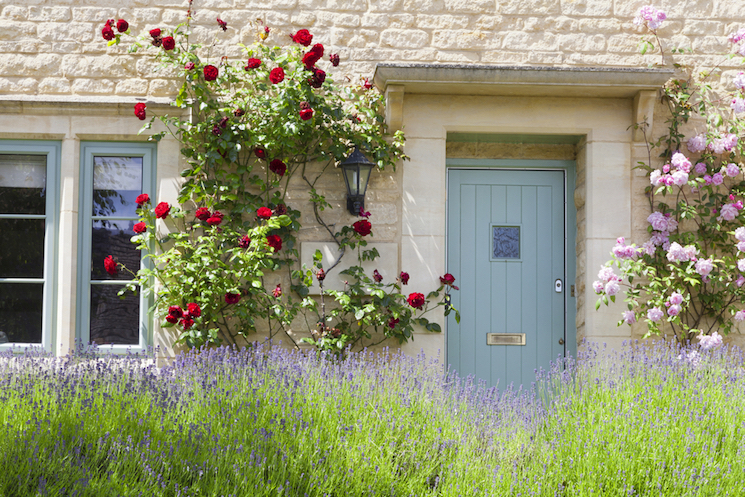
Climbing roses are quintessentially English
Image: Jo JonesWant to create that romantic, English cottage garden look? Growing a climbing rose around your front door will do it. These pretty roses love growing up walls, fences and pergolas. Climbing roses are upright, vigorous, stiff-stemmed plants that will flower throughout the summer. Many climbing roses are fragranced and there are several different types of blooms to choose from.
Rambling rose
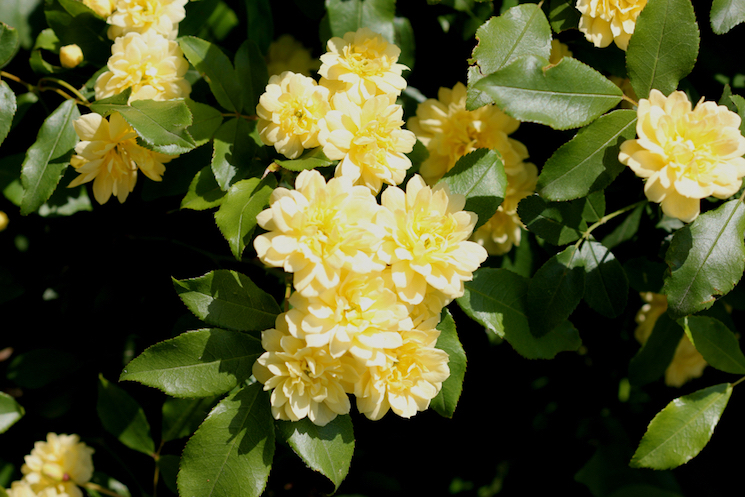
Rambling roses will disguise unattractive areas of your garden
Image: Gercharan SinghRambling roses are more vigorous than climbing roses. They will cover a larger area more quickly, and so are great for disguising unattractive bits of your garden. But this does mean they can be more difficult to contain. They generally flower in one heavy flush during the summer. Blooms are single or double and are borne in clusters on short shoots from old wood. Many varieties are fragrant and they are happy climbing over a wall, fence, pergola, or growing into a tree.
Miniature rose
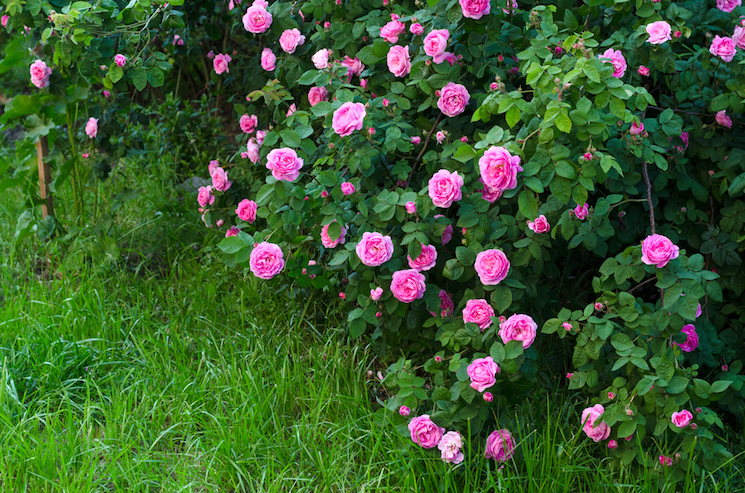
Miniature roses are small and delicate
Image: ShutterstockThe clue is in the name: miniature roses are very compact with small leaves and flowers. They produce clusters of single or double flowers in flushes throughout the summer and autumn, but they are rarely fragrant. These roses work best in containers, window boxes and border edges.
When to plant roses
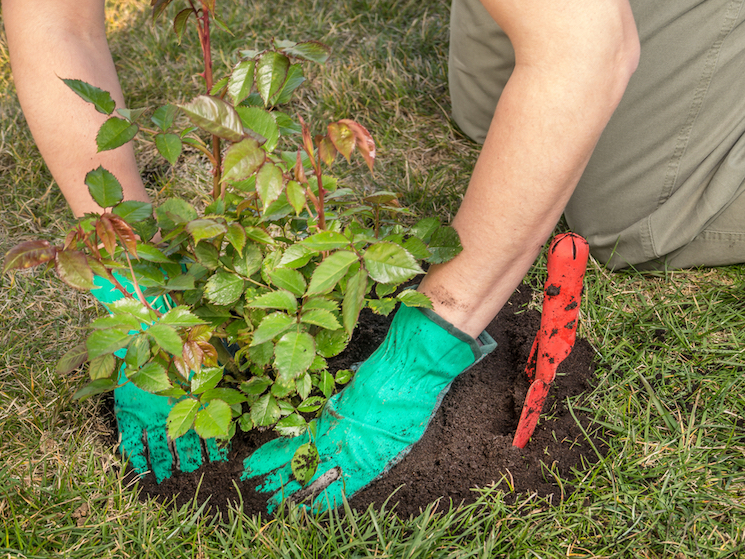
Plant roses during their dormant season
Image: pryzmatThe best time to plant roses is during their dormant season – throughout autumn and from late winter to early spring. It's best not to plant them when the ground is frozen in the middle of winter.
When you plant your roses will also depend on how you bought them. Roses come as either bare root, container-grown or containerised plants.
Bare root roses: Bare root roses have been lifted from the ground during their dormant season (November to March) and will arrive as a bare shrub with exposed roots. This may look unimpressive at first but once planted they will soon start to send out roots and grow. They’re usually good quality and great value which is why all Van Meuwen roses are bare root.
Bare root roses should be planted as soon as you receive them. But if you have to delay planting, keep your rose plants somewhere cool but frost-free. If planting is heavily delayed it may be best to 'heel-in' your rose. This simply means digging a trench in ordinary garden soil, placing the roots inside, and covering with soil.
Containerised roses: You’ll find containerised roses at garden centres from autumn to spring. These roses started as bare root roses and have been put in pots with earth to stop their roots drying out. Plant them as soon as you get them home.
Container-grown roses: Roses that have been grown in a container are available to buy all year round and can be planted at any time of year. They’re usually not as strong as bare root roses because their root spread is not as big. They’re also comparatively expensive.Where to grow roses
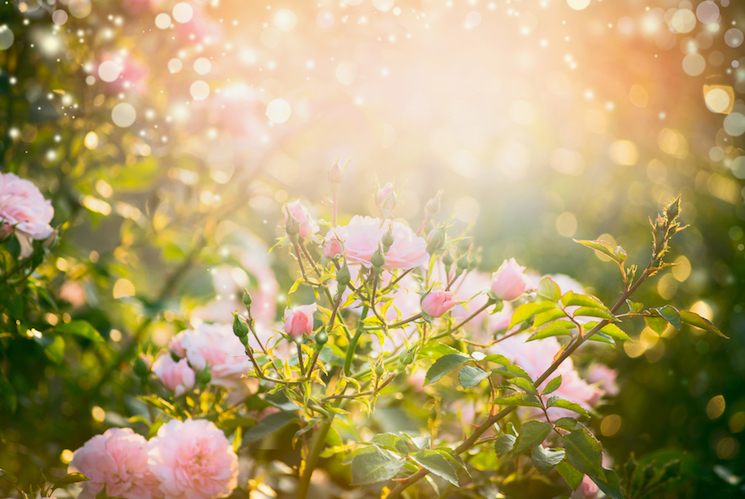
Roses need a sunny, sheltered spot to flourish
Image: VicuschkaRoses are very fussy when it comes to location. To get the best result, choose a spot that offers sun, shelter, space and good quality soil.
1. Sun: Rose plants like to be grown in a sunny position. They do best with at least four hours’ sunshine a day.
2. Shelter: Choose a location that’s sheltered from strong winds which can loosen the base of the rose in the soil and damage (or even kill) it.
3. Space: Roses don’t thrive when crowded by other plants, as they have to compete for moisture and sunlight. Aim to plant your rose 3 feet away from other plants, and avoid planting under overhanging trees.
4. Soil: Well-drained soil is essential, as roses suffer when they sit in too much water. If you have a heavy clay soil, dig in some organic matter and coarse grit to improve the drainage. If you’re planting a rose where another rose used to be, it’s important you change the soil first. If you don’t, your rose is likely to suffer ‘replant disease’ - a little understood, but well recognised disorder, which will prevent your new rose from thriving.How to plant bare root roses
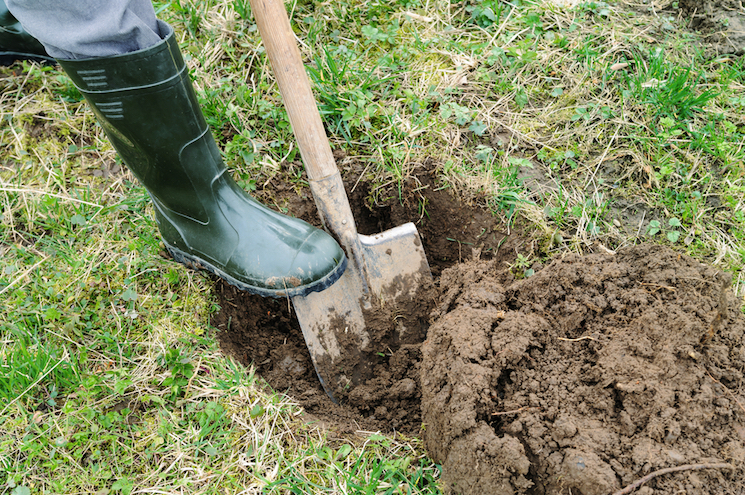
Dig a hole that?s wide and deep enough to accommodate the roots
Image: Yunava1With just a little care and attention, your bare root roses will get off to an excellent start when planted in the ground. Just follow these simple steps:
1.Soak the roots of your bare root rose for 2-3 hours prior to planting.
2. Dig a planting hole that’s wide enough to accommodate the roots comfortably and deep enough so that the bud union (the point where the rose has been grafted onto the rootstock) rests at soil level. The bud union looks like a bulge at the base of the shoots.
3. Improve the soil. Even if your soil is well drained, it’s best to improve it with organic matter - such as well-rotted manure, compost or recycled green waste - before planting. Mix in some slow-release fertiliser (a specific rose food is best) as roses are heavy feeders. If the soil hasn't been cultivated recently, aim to dig the soil to about 45cm (18 inches) deep.
4. Position the rose in the centre of the hole and check the depth is correct. Laying a bamboo cane across the top of the hole and lining it up next to the stem is a good way to check you have the correct depth.
5. Gently tease out the roots. This will help them to spread out more quickly.
6. Backfill around the roots with the remaining soil.
7. Tread the rose in firmly but not too hard.
8. Water your rose thoroughly and keep the soil moist, especially in hot sunny spells.
How to plant climbing roses
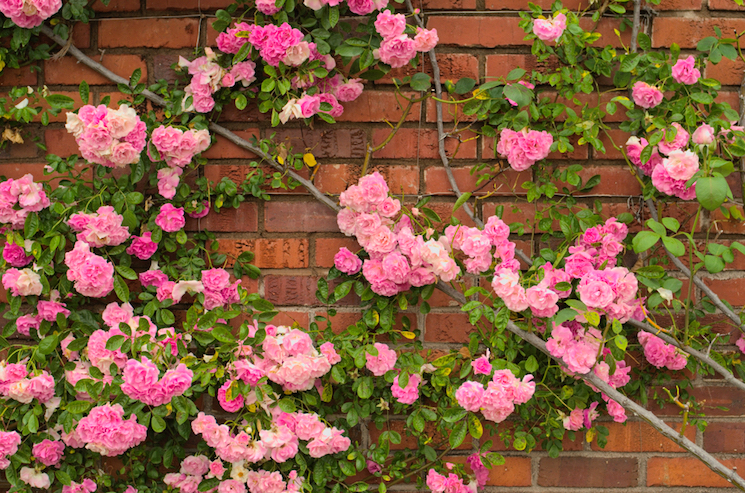
Use horizontal wires to train climbing roses against a wall
Image: ajisai13Walls and other solid structures often cause the soil at their base to be dry, so plant your climbing rose 30-45cm (12-18 inches) away from the wall or fence at a 45 degree angle. This will enable it to receive sufficient moisture.
Climbing roses will require some support, normally in the form of horizontal wires spaced 45cm (18 inches) apart up a wall or fence and positioned about 7cm away from the wall to allow air circulation. You can also grow climbing roses over a rose arch, which is very effective.
Planting is the same as for other roses, with the bud union at soil level. After firming in, use canes to guide the shoots towards the support.How to grow roses in containers
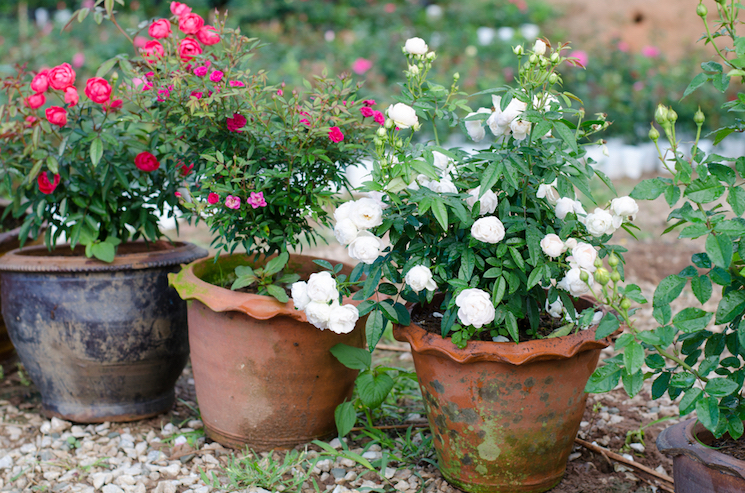
Container roses look beautiful on patios
Image: joloeiIf you have heavy clay soil or just want to brighten up your patio you can successfully grow roses in containers. Containers need to be at least 30-45cm (12-18 inches) deep for bush roses, and 25cm (10 inches) deep for miniature roses.
1. Fill your chosen container with loam-based compost such as John Innes No. 3.
2. Follow the planting directions as for planting in the ground (see above).
3. Top-dress with rose fertiliser each spring.
4. Feed regularly once they begin to flower, with a liquid feed containing a high potash fertiliser (such as tomato fertiliser)Feeding and mulching roses
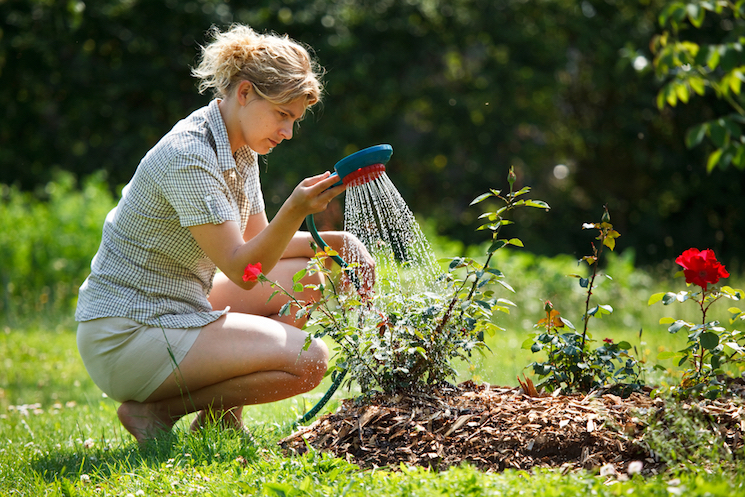
Make sure your roses after are mulched during spring feeding
Image: IncRoses are greedy feeders and will need regular fertilising to encourage healthy plants. In the spring, sprinkle a handful of slow-release fertiliser around the base of your rose, following the manufacturer's instructions. Lightly fork it into the soil, keeping it clear of the stems.
Next, mulch your rose plant by spreading an 8cm layer of well-rotted manure, compost or recycled green waste around the base, taking care to keep a 10cm (4 inch) collar free of mulch around the stem to prevent the bark rotting.
To find out how to feed patio roses see 'Growing roses in containers', above.We hope this guide has told you all you need to know about choosing, planting and growing roses. Follow these steps and your rose plants will give you beautiful blooms for years to come.
Sign up to the Van Meuwen Gardener's Club for Special Offers
Delivery Information Privacy Policy Cookies Terms of Business Affiliate Programme Planting & Cultural Advice Contact Us© 2025 Van Meuwen. All rights reserved. A division of Branded Garden Products Limited.
- House Plants

